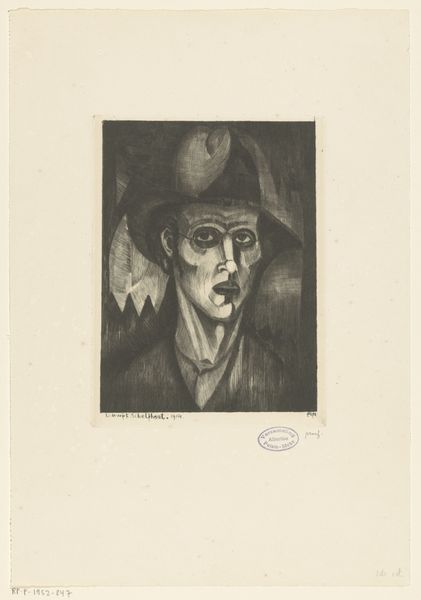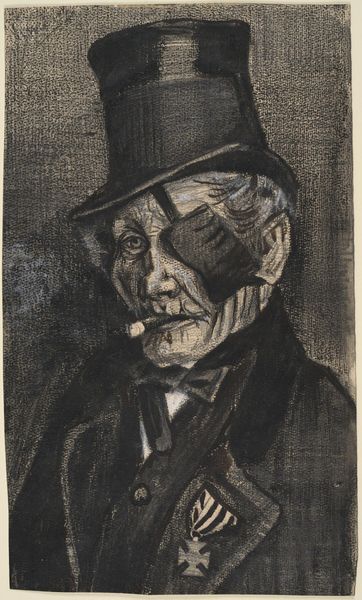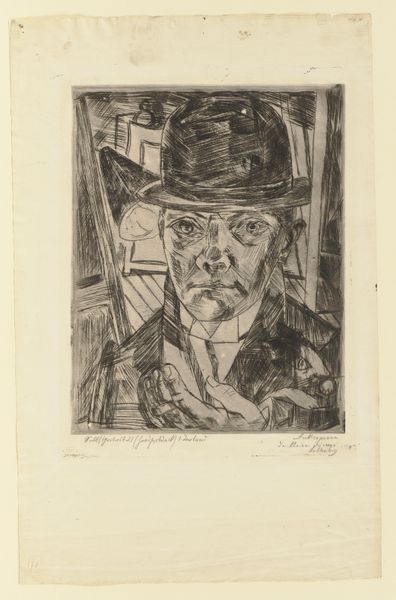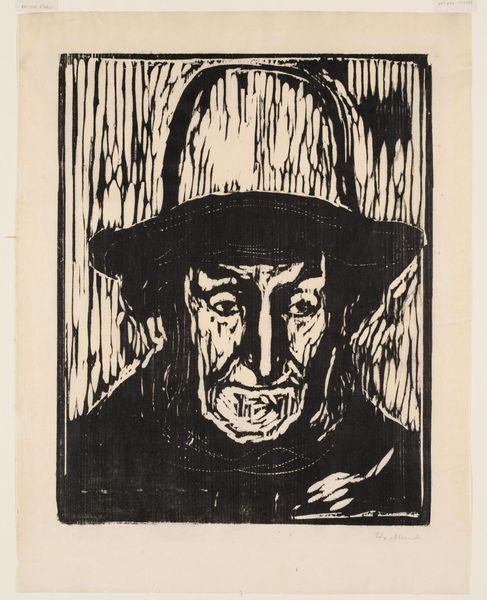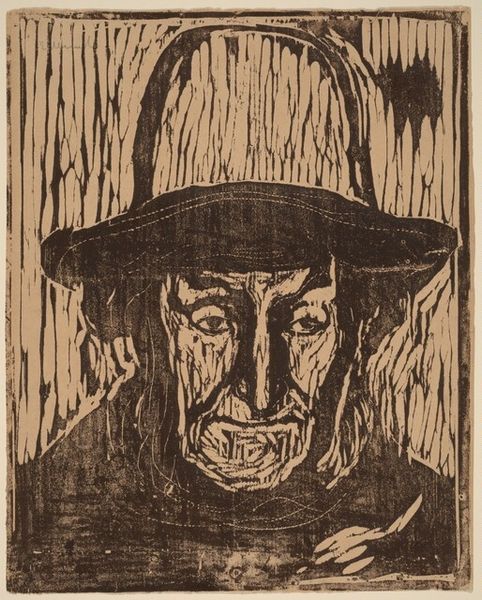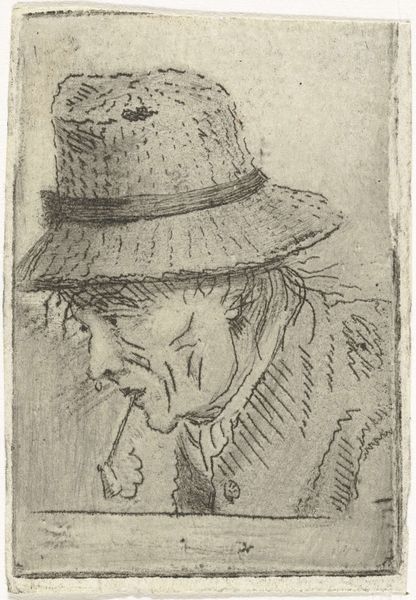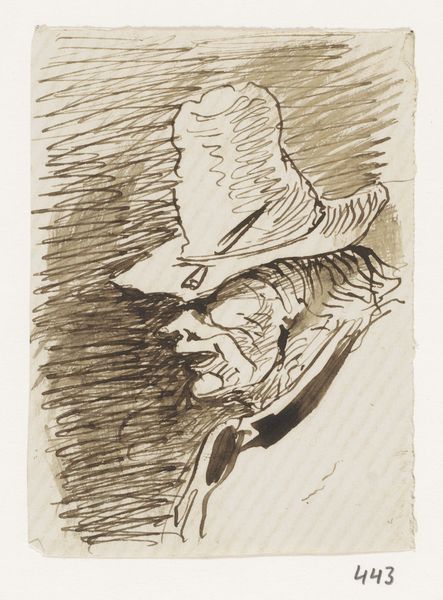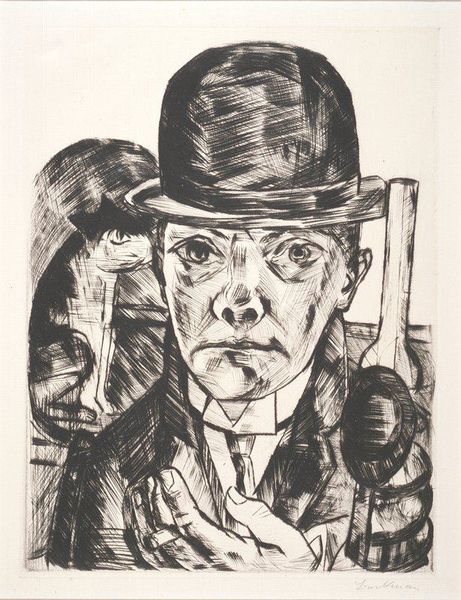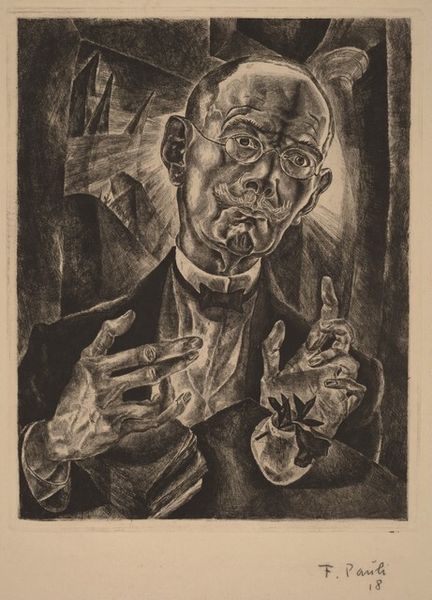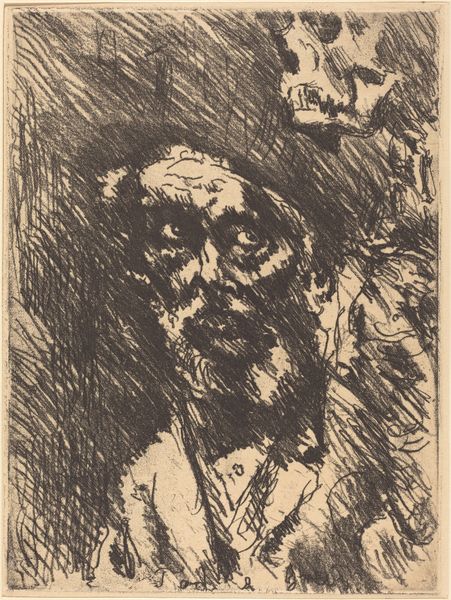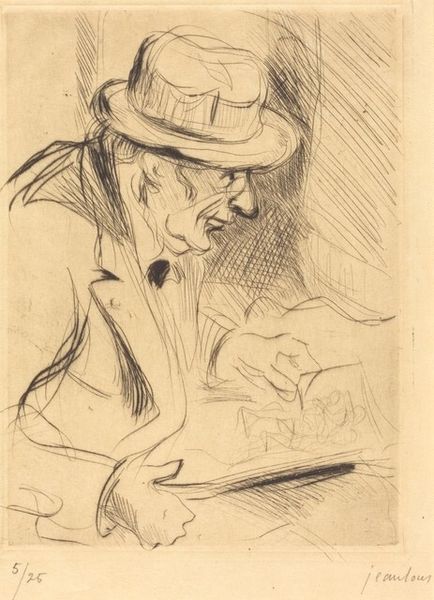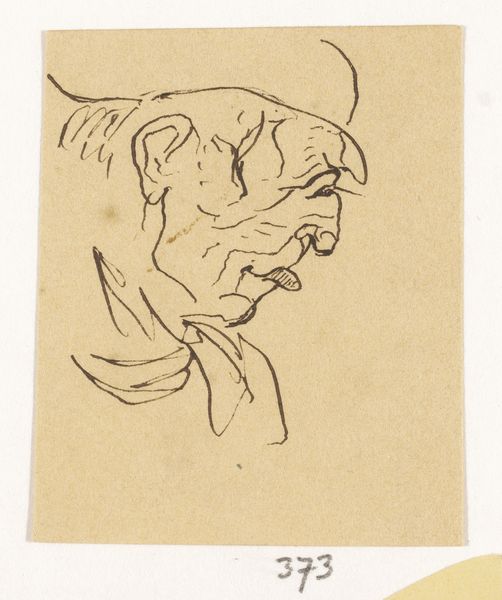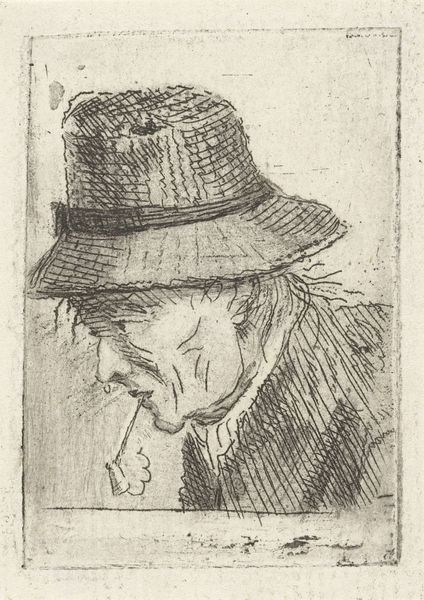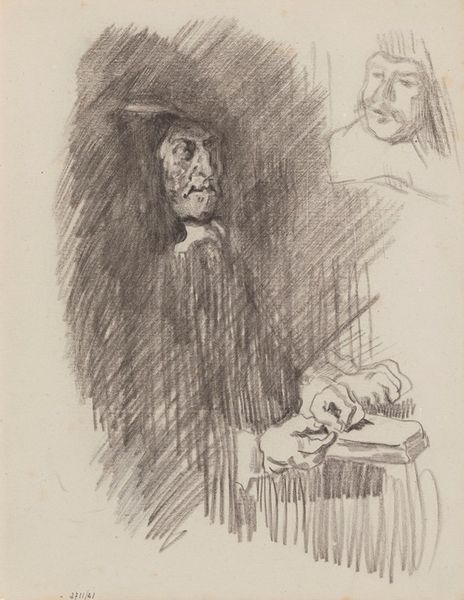
drawing, ink
#
portrait
#
drawing
#
art-nouveau
#
ink drawing
#
self-portrait
#
pen sketch
#
figuration
#
ink
#
line
Dimensions: sheet: 39.1 x 322 cm (15 3/8 x 126 3/4 in.) mount: 39.6 x 33 cm (15 9/16 x 13 in.)
Copyright: National Gallery of Art: CC0 1.0
Curator: Here we have Lodewijk Schelfhout's "Self-Portrait," created in 1907 using ink. Look at the confident, almost confrontational gaze. Editor: It strikes me immediately with its intensity. The stark contrast of light and shadow gives it a raw, almost unsettling feel. The hat seems to cast a shadow, literally and figuratively, over the subject's face. Curator: Schelfhout, as an artist working in the early 20th century, navigated shifting artistic currents. This self-portrait is situated during a time when artists grappled with how to represent themselves in a rapidly modernizing world. Consider how artistic identity was evolving during this period of social change and innovation. Editor: Exactly! This isn’t just a face; it’s a statement. Look at the visible brushstrokes—or pen strokes here; that’s Schelfhout choosing to present an unvarnished view of himself. Was it an attempt to connect with a changing audience on a more authentic level, or more honestly, trying to portray himself and the world in all its intensity? Curator: The sketch style definitely moves away from traditional portraiture, inviting a more personal and perhaps intimate look at the artist. The choice of ink emphasizes line and form, which reflects Art Nouveau, but with its raw and sketchy composition the self portrait feels somewhat contemporary, even post-impressionistic in its execution. Editor: I agree, and there’s something subtly defiant in his gaze. Artists used self-portraits as statements of intent but also perhaps a commentary on visibility, of claiming a space when cultural narratives were changing. In this self portrait it can also mean questioning existing ones and what kind of role it would play on society. Curator: Right, think of how such pieces circulated—displayed in galleries, reproduced in journals. Art institutions of the day shaped how self-portraits like this were received, solidifying artists' reputations and reinforcing certain notions of artistic genius. It would be interesting to investigate on what kind of art circuits it was inserted. Editor: I’m left wondering about the intentionality of that almost challenging stare, about claiming space, questioning identities. The rough lines and bold shadows, the story of a complex human behind the artistic persona… Curator: I'm struck by the technical choices, seeing them as decisions that reveal the artist’s navigation of a specific time and place, enmeshed within a shifting landscape of artistic expectations and historical contexts.
Comments
No comments
Be the first to comment and join the conversation on the ultimate creative platform.
